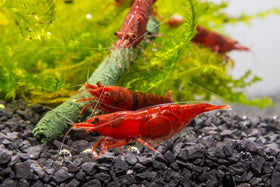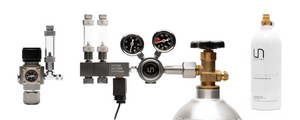Starting an aquarium with real aquarium plants is a great way to make your fish feel at home. However, aquarium plants may come with pests or algae. Unfortunately, no aquarium plant nursery, retailer, wholesaler, or farm can guarantee their plants to be 100% snail or algae free. Aside from purchasing tissue culture plants which are guaranteed to be pest-free, there are a couple ways to ensure that your aquarium is off to a great start.
Note: Both dipping options are toxic to humans and protective masks, eye wear, and gloves should be used.
Potassium Permanganate Dip
Potassium permanganate is a chemical that can be purchased from any hardware store. It is commonly used to treat water for pools or treating waste water. Potassium permanganate dip is less harsh than the bleach dip method.
Materials Required: Potassium Permanganate, 2 buckets (or plastic containers), water, protective equipment
1. Fill bucket half full with clean water, fill the other bucket with clean water
2. Add potassium permanganate dip until the water is dark pink/purple
3. Dip plants for 10-20 minutes
4. Rinse the dipped plants in the bucket of clean water until pink residue is gone
5. You can rinse under running tap water after as an extra precaution before putting the plant in your aquarium
Bleach Dip
Bleach dipping your plants with Clorox or chlorine is a great way to kill algae. However, it is also very easy to kill the plant you are treating. It is important that you remove all remnants of the bleach from your plant before adding it back to your aquarium.
Materials Required: bleach, 2 buckets (or plastic containers), water, protective equipment
1. Mix a solution of 1 part bleach to 19 parts water in a bucket A.
2. Fill bucket B with pure water
3. Remove all rock wool, lead weights, and any other plant holding material that came with the plant
4. Dip plants for up to 3 minutes in the bucket A (chlorinated water)
5. Remove plants immediately and dip in bucket B (clean water)
6. If the smell of chlorine is still present in the plant, run the plant under tap water until there is no odor.




